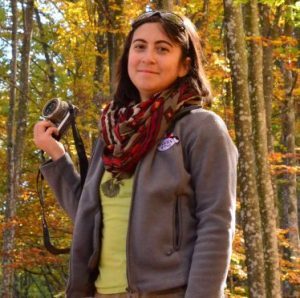Bearproof garbage bins, strict food storage regulations in campgrounds and discouraging the practice of luring bears in for the sake of photographing them. These are just some of the ways Canada is successfully limiting human-bear interactions. Why Canada? Our colleague, bear specialist Csaba Domokos, attended the 28th conference organized by the IBA (International Association for Bear Research and Management) in Edmonton, Canada.
How would you appreciate the level of the conference?
I knew exactly what to expect, as I already attended a conference like this 12 years ago, in 2012. The organizer, IBA, is amongst the best when it comes to bear research. A committee reviews the received presentations and selects those they think are worth presenting. The more than 400 people who attended this conference are the people who matter worldwide in bear research.

You were not only invited to participate, but also held a presentation. What was the topic you presented?
I presented the results of a study we have been working on for several years. We have been studying the impact of the planned Târgu Mureș – Iași (A8) highway on bears and other species alike. From Ditrău to Târgu Neamț, we surveyed the route of the planned high and the bear population in its surroundings. There were several interesting findings. Firstly, animals were only detected in the western half of the study area. Not only bears, but other large mammals as well, such as red deer, roe deer and wild boar This came as a surprise to us, as the areas east of Lake Bicaz are theoretically among the best bear habitats in the country. It is likely that high mortality caused by heavy poaching has in effect turned these areas into ecological traps. This means that, in theory, these are very good habitats that attract animals, as bears detect that there are no other bears around and that there is unoccupied habitat available to them, but then the bears get shot, illegally. We didn’t know there was this level of pressure on the species. The results were surprising in other ways, too, as there were far fewer bears than we expected.

Will the results of your research be taken into account before the highway is built?
In the meantime, the environmental permit has already been issued for this section of the planned highway route and, technically, there are no dedicated wildlife crossings planned here. The company that carried out the Environmental Impact Assessment considered that there would be enough viaducts and tunnels anyway, due to the difficult terrain, to make 30% of this stretch of highway permeable for wildlife. Once the motorway has been built and after the animals have become accustomed to these potential crossing structures, perhaps this survey could be repeated. Then we could see if they do indeed cross the highway, whether the existing passages are really sufficient or if it is necessary to build more. However, it will be very costly and much more difficult to build crossing structures once the highway has been completed, so there is little chance of this actually happening.
In Romania, human-bear conflicts are on the rise. How do experts from other countries assess the relationship and coexistence between people and bears in their own countries?
In Europe, in countries where there is a significant bear population, the species is hunted, despite the fact that the Habitats Directive does not permit trophy hunting. We also know that in some places where they have carried out serious and long-term research, such as in Sweden, hunting will soon cause serious problems for the species, as confirmed by solid scientific data. There, it is predicted that the population may decline to the point where the long-term viability of the species will be threatened. There are other approaches as well. There were quite a few presentations from British Columbia, since the conference was held in the neighboring province. When a temporary hunting ban was announced in Romania in 2016, a bear hunting ban had just been announced in British Columbia too. The difference is that the hunting ban is still in effect there and they don’t even consider lifting it. There are similar problems and there are different approaches. So we are not in a unique situation in Romania. What is important here is that we should also strive to have reliable scientific data and use this as a basis for planning the management and the conservation of the species. If we see that we are not going in the right direction, we should make decisions based on sound scientific data and not on emotions.


How useful was this conference for you professionally?
For me it was very useful, if for nothing else, than just to spend a few days listening to people who actually know a lot about bears. There are a number of international initiatives that we are involved in and to which we are providing data and we are also continuing the conversations about starting new international studies.

































